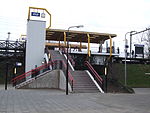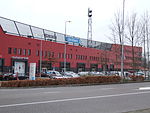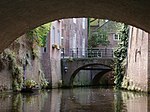Maaspoort
Badminton in the NetherlandsBadminton venuesBasketball venues in the NetherlandsBuildings and structures in 's-HertogenboschConcert halls in the Netherlands ... and 4 more
Dutch sports venue stubsIndoor arenas in the NetherlandsSport in 's-HertogenboschSports venues in North Brabant

The Maaspoort (English: Meuse Gate) is an indoor arena in 's-Hertogenbosch, Netherlands. Opened on 2 September 1982, it has a seating capacity for 3,500 people in sporting events and 4,000 for concerts. It is the regular home venue of the Heroes Den Bosch basketball club. In 1982, the Maaspoort hosted the final of the FIBA Intercontinental Cup.
Excerpt from the Wikipedia article Maaspoort (License: CC BY-SA 3.0, Authors, Images).Maaspoort
Marathonloop, 's-Hertogenbosch Empel
Geographical coordinates (GPS) Address Website External links Nearby Places Show on map
Geographical coordinates (GPS)
| Latitude | Longitude |
|---|---|
| N 51.722677777778 ° | E 5.3155194444444 ° |
Address
Maaspoort Sports & Events
Marathonloop
5235 AB 's-Hertogenbosch, Empel
North Brabant, Netherlands
Open on Google Maps










